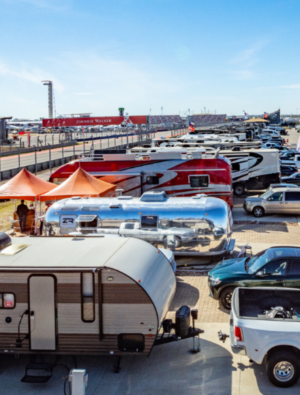We use cookies and similar technologies to help personalize content, tailor and measure ads, and provide a better experience. By clicking accept, you agree to this, as outlined in our Privacy Policy.
When Logan Sargeant made his F1 debut at the United States Grand Prix in 2022 during the Friday practice sessions, there was serious buzz about an American finally returning to the grid of the world’s premier motorsports series. This October 20-22 in Austin, Logan will become the most recent addition to a prestigious list of American racers who’ve raced at the F1 U.S. Grand Prix, many of them who remain household names to this day.
Arguably the most famous, Mario Andretti, arrived in Formula 1 with a bang — scoring a sensational pole position (first place start) on his debut with former F1 team Lotus in 1968. Ten years later, with the same team, he became World Champion. He established himself as one of the G.O.A.T’s (greatest of all time) in motorsports being one of only three drivers to have won races in Formula 1, IndyCar, the World Sportscar Championship, and NASCAR. A decade after leaving F1, he was still winning races in IndyCar in the States and the Andretti family name continued to be known in all forms of racing, with Mario’s late brother Aldo and all their combined children and grandchildren (eight family members total) taking a stint behind the wheel.
Arizona’s Eddie Cheever made his F1 debut in 1978 at the age of 20. He landed a prized seat at Renault, but after finishing in the top three only four races he lost his drive for 1984. A total of 132 race starts for various teams throughout the 1980’s didn’t result in the victory Cheever’s early talent had promised.
Mark Donohue – aka “Captain Nice” and later “Dark Donohue” – shone in Formula 1, scoring a podium on his debut in a McLaren run by Roger Penske in Canada, 1971. Tragically, however, Donohue lost his life in practice in Austria four years later. His legacy lives on through his son, David Donohue, who continues to compete in sportscar racing, and his book, The Unfair Advantage. This chronicle of his motorsport journey includes his experience within different series, racing various cars, and many, many (mostly failed) experiments, as Mark was one of the few drivers who physically built and bettered his cars.
In 1965, Richie Ginther recorded a series of firsts when he took victory in Mexico City. It was his, Honda’s, and Goodyear’s first Grand Prix win.
Daniel Sexton Gurney was known for his impeccable racing skills and his car, the Eagle, a vehicle as stylish as they come. He recorded the first Grand Prix win for an American-built F1 machine at Spa-Francorchamps, the Belgian racetrack, in 1967.
Floridian Phil Hill became America’s first F1 World Champion in 1961. In a title duel with his Ferrari team-mate, Wolfgang von Trips, Hill claimed overall honors at Monza in the beautiful Sharknose 156.
Heir to the Revlon cosmetics empire, New Yorker Peter Revson scored his first Grand Prix win at Silverstone in 1973 and did so again in Canada before joining the Shadow team. In 1996, he was posthumously inducted into the Motorsports Hall of Fame of America in the sports car category.
Scott Speed had the right name to be an F1 driver, but his spell at Red Bull’s junior team, Scuderia Torro Rosso, came to a sudden halt in mid-2007. While Speed transitioned into a successful NASCAR, Formula E, and Rallycross career, his Red Bull replacement was none other than eventual four-time F1 World Champion, Sebastian Vettel.
Prior to Logan Sargeant, the last American driver to compete in F1 was Alexander Rossi who made five Grand Prix starts with the Manor Marussia team in 2015; his best finish was 12th in Austin that year. The result was more down to the car than the driver though as the following year, he went on to win the Indianapolis 500 as a rookie!
As with any other sport, when an American makes it on the world stage, they have the support of the whole country. Logan Sargeant is the first American in F1 since 2015 and, with Andretti Motorsport poised to enter the sport as a new team, the U.S. involvement will be at an all-time high. We, for one, cannot wait to see where it goes.

















